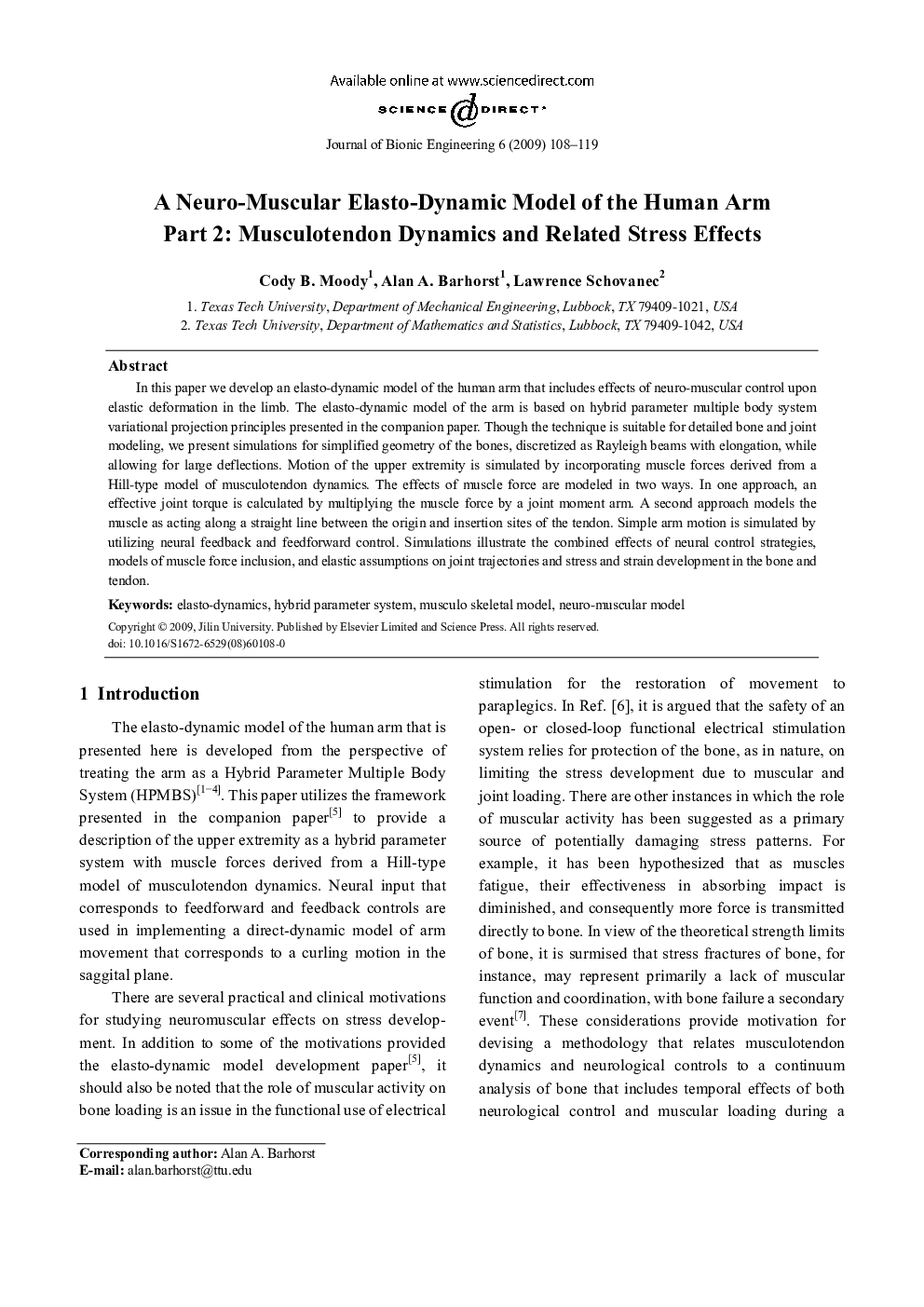| Article ID | Journal | Published Year | Pages | File Type |
|---|---|---|---|---|
| 827052 | Journal of Bionic Engineering | 2009 | 12 Pages |
In this paper we develop an elasto-dynamic model of the human arm that includes effects of neuro-muscular control upon elastic deformation in the limb. The elasto-dynamic model of the arm is based on hybrid parameter multiple body system variational projection principles presented in the companion paper. Though the technique is suitable for detailed bone and joint modeling, we present simulations for simplified geometry of the bones, discretized as Rayleigh beams with elongation, while allowing for large deflections. Motion of the upper extremity is simulated by incorporating muscle forces derived from a Hill-type model of musculotendon dynamics. The effects of muscle force are modeled in two ways. In one approach, an effective joint torque is calculated by multiplying the muscle force by a joint moment arm. A second approach models the muscle as acting along a straight line between the origin and insertion sites of the tendon. Simple arm motion is simulated by utilizing neural feedback and feedforward control. Simulations illustrate the combined effects of neural control strategies, models of muscle force inclusion, and elastic assumptions on joint trajectories and stress and strain development in the bone and tendon.
